Apple iPhone 15 Pro review: small and mighty
While it lacks the zoom range of the Max, the iPhone 15 Pro has its advantages

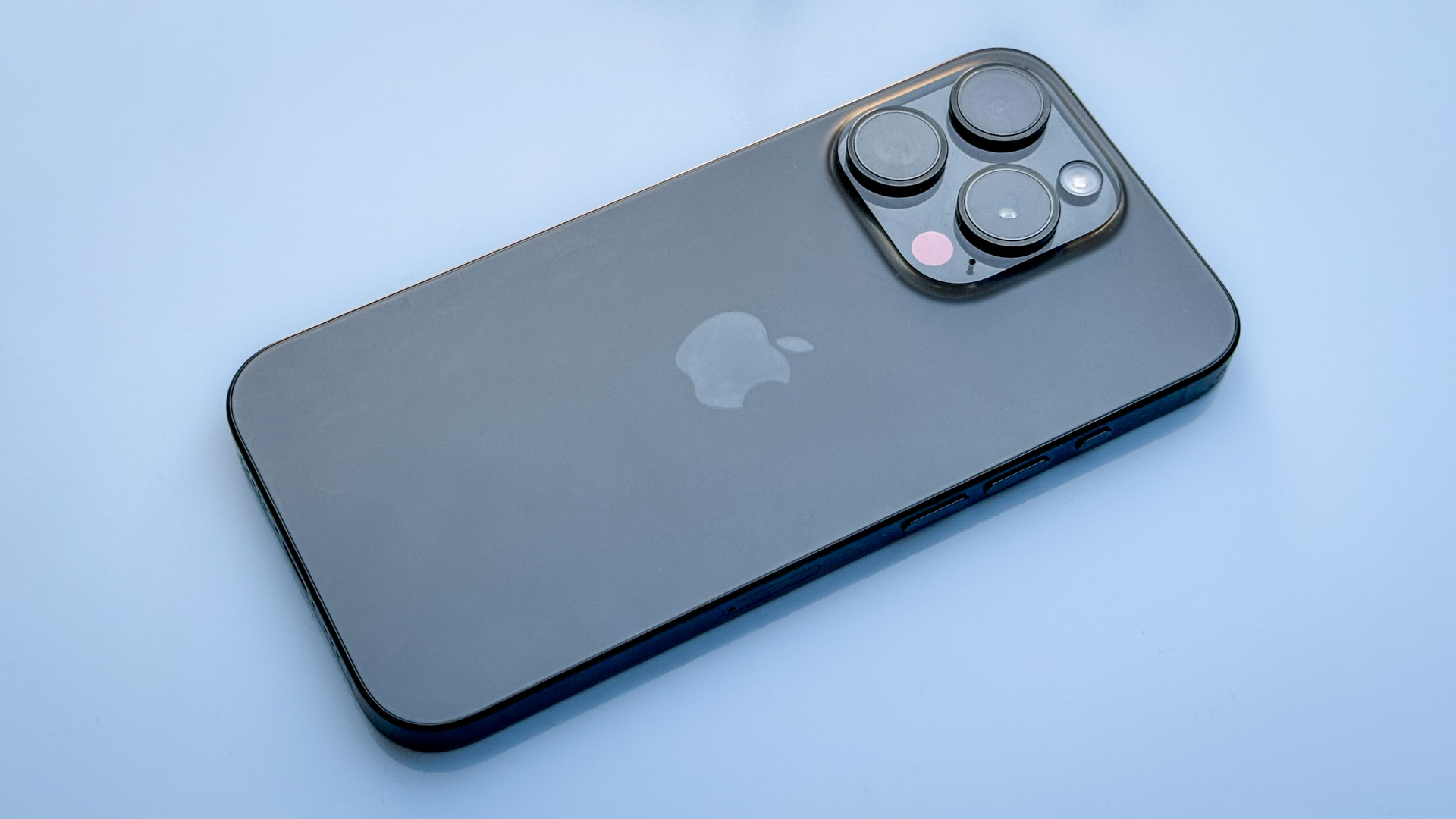
Apple’s smaller pro model has plenty of reasons why you might choose it over the Max. This is an extremely powerful phone in a form that fits perfectly in your pocket and your hand.
-
+
Lighter titanium build
-
+
USB-C charging is handy
-
+
Smaller form factor fits better in the hand
-
-
Screen may be too small for some
-
-
Misses the 5X zoom option
-
-
Action button isn’t a big deal
Why you can trust T3
The iPhone 15 Pro could be the best iPhone for many discerning users. As a Pro model it boasts (almost) all of the flagship features you would want but provides it in a size of handset that not only fits easily in your pocket but nicely in your hand.
If there’s one factor that’s likely to have users reaching for the Max model though it’s the camera. The iPhone 15 Pro still has a 3x telephoto camera as opposed to new 5x telephoto camera on the iPhone 15 Pro Max.
What you do get, of course, is the new titanium casing, the USB-C charging and the Action button on the side. Plus the new A17 Pro chip that gives Mac-like performance for editing, gaming and more. On top of all of that, you still get the great always-on ProMotion screen and some truly impressive camera features.
As well as giving an overview of the phone in this review, I’m going to discuss how it compares with the previous iPhone 14 Pro and indeed the iPhone 13 Pro for those looking to make an upgrade. I’ll also offer advice for those looking to choose between this model and the iPhone 15 Pro Max for their phone.

How much is the iPhone 15 Pro?
Starting from £999 / $999 / AU$1849, the iPhone 15 Pro stays just under that thousand pound/dollar mark, which physiologically is a big selling point. Unlike the Pro Max, the 15 Pro still comes in a 128GB capacity version. If you use iCloud storage for all of your photos and videos, and a streaming service for your music, this may be enough.
The phone is also available in 256GB, 512GB and 1TB versions, with the top model costing £1499 / $1499 / AU$2749. If you have a phone to trade in you can get up to £715 / $650 off the price of your new phone. For reference, an iPhone 14 Pro will get you up to £620 / $570 and a 13 Pro will get you up to £500 / $480 off.
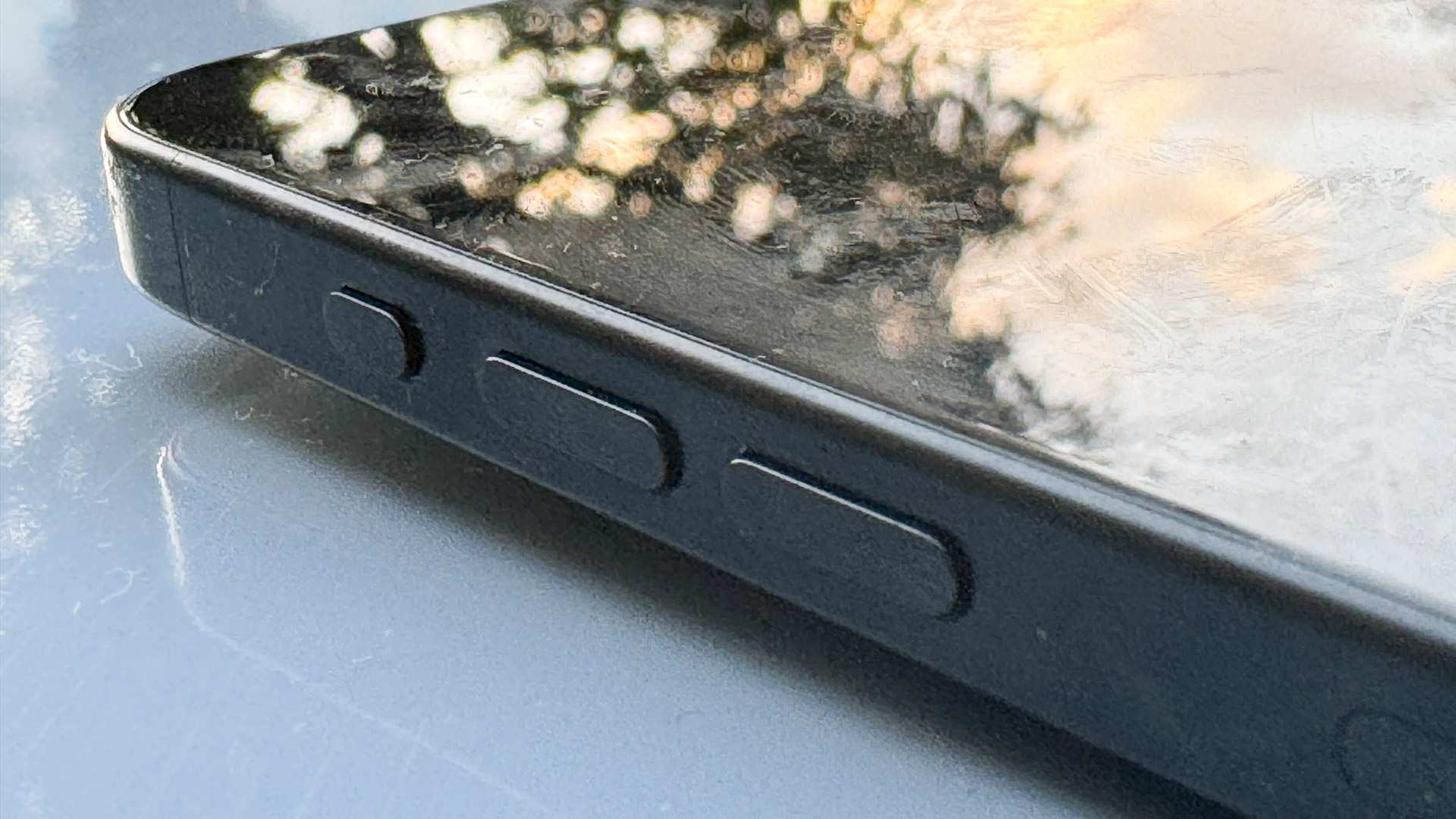
What's new on the iPhone 15 Pro?
Like the iPhone 15 Pro Max, this phone features a new titanium enclosure. This aerospace-grade titanium is stronger and lighter than the previous stainless steel enclosure used on older Pro models. You can feel the difference in weight between the 14 Pro and 15 Pro models because of this, and the band around the phone has a more matte finish because of it.
Get all the latest news, reviews, deals and buying guides on gorgeous tech, home and active products from the T3 experts
On that band around the iPhone 15 Pro, the familiar mute switch has been replaced with a new action button. Unlike on the Apple Watch Ultra, this button is still body coloured rather than bright orange (thankfully), but still provides quick access to a range of functions.
By default, the button will still mute and unmute the ringer – requiring a longer press to swap between them. In the action button menu, though, you can customise the function, with options including setting a new focus mode, opening the camera app, turning on the torch, opening voice memos, a magnifying option, accessibility features or any of your favourite shortcuts.
There’s a change on the bottom of the band as well, with a new charging port. The iPhone 15 Pro (as with the rest of the 15 range) now offers USB-C charging rather than the Lightning port. This is a big change for the iPhone and although we suspected it was coming, was still nice to see.
Practically, having USB-C changing means that you have to carry less power leads – as the same connection that fits your iPad, MacBook (unless you have a MagSafe model), and accessory will also charge the iPhone. Apple has been using USB-C charging on other products for quite some time, and all recent charging plugs and wireless charging cables (for Watch and iPhone) have a USB-C port on them.
That means that you probably already have the spare cables and plugs you need for the iPhone 15 Pro. Of course, the new USB-C to USB-C knitted cable comes in the box too. You may want to invest in a few spare plugs and USB-C cables if not – especially if, like me, you like having spares in your bag, office and car.
Inside the iPhone 15 Pro is a brand new A17 Pro chip. This system on a chip – which includes the CPU, GPU and neural engine – is Apple’s first 3-nanometer device in an iPhone, hence has the Pro designation rather than the Bionic used on older chips. I suspect the iPhone will continue to split between the Bionic for the non-Pro and the Pro chips for the Pro iPhones in future models.
As with every new iPhone release, the iPhone 15 Pro sees a boost in the camera performance. While this model doesn’t get the new 5x telephoto camera that has been included in the iPhone 15 Pro Max, there are still new lens coatings, functions and the increased processing power of the A17 Pro chip (and its neural engines) to improve the quality of images from the phone.
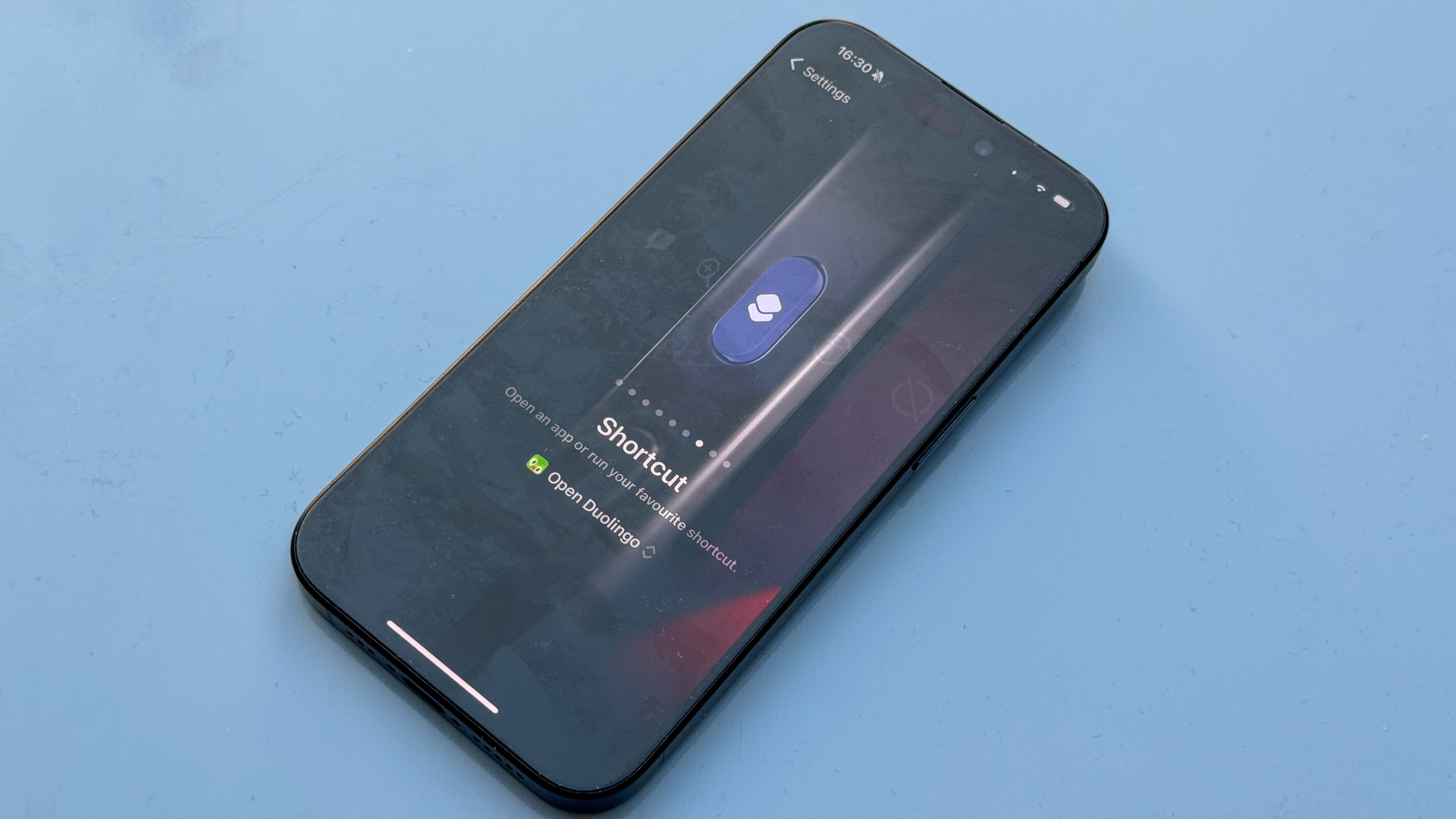
The design of the iPhone 15 Pro
As with the iPhone 15 Pro Max, the bezels on the 15 Pro have been reduced, so although the screen is the same size, the phone is fractionally smaller than last year’s model. Measuring 146.6 x 70.6mm (5.77 x 2.78 inches) the difference is a mere 0.9mm on either side but it is noticeable when placed side by side.
The weight is more of a change. Thanks to the titanium enclosure the iPhone 15 Pro weighs just 187g, which is 19g less than the 14 Pro. As soon as you hold it, you can tell it’s lighter, especially if you use it without a case.
The feel of the titanium also makes the phone feel different in your hand. The stainless steel band felt cool to the touch, while the titanium is more neutral. I’m not sure which I prefer but it does change the experience for me. Of course, once you put the phone in a case, which most people will, you won’t notice much difference here at all.
The action button is perhaps the biggest design change to the iPhone in many generations. That mute switch has been a feature since the very first iPhone and provides a simple way to turn your ringer on and off. Though I suspect, like me, most people rarely use it. Unless I’m waiting for an important call, my phone is normally in silent mode with just the vibration to alert me.
For that reason, it makes sense to allow the new action button to be customised to perform other tasks that you might want to use regularly. I set mine to activate the front camera – allowing me to take selfies without having to go into the camera app and then flip to the front camera. I sometimes set it to open one of the apps I go straight to everytime I open my phone, which right now is Duolingo for some German lessons.
The other big change this year is the USB-C charging. While the port on the bottom doesn’t look much different (slightly thicker), the implications of needing a different charging cable are significant. If you use wireless or MagSafe charging, it has no impact, but if you like to physically plug your phone in it might.
A USB-C charging cable is in the box, but I suspect there has been a rise in the number of people buying the Apple USB-C power plug and spare USB-C cables. If you own an iPad or one of the non-MagSafe Macs, you already have a USB-C charging cable of course. I do like the fact that I can now take just one cable to charge all three, though I’ll probably pick up a few spares too.
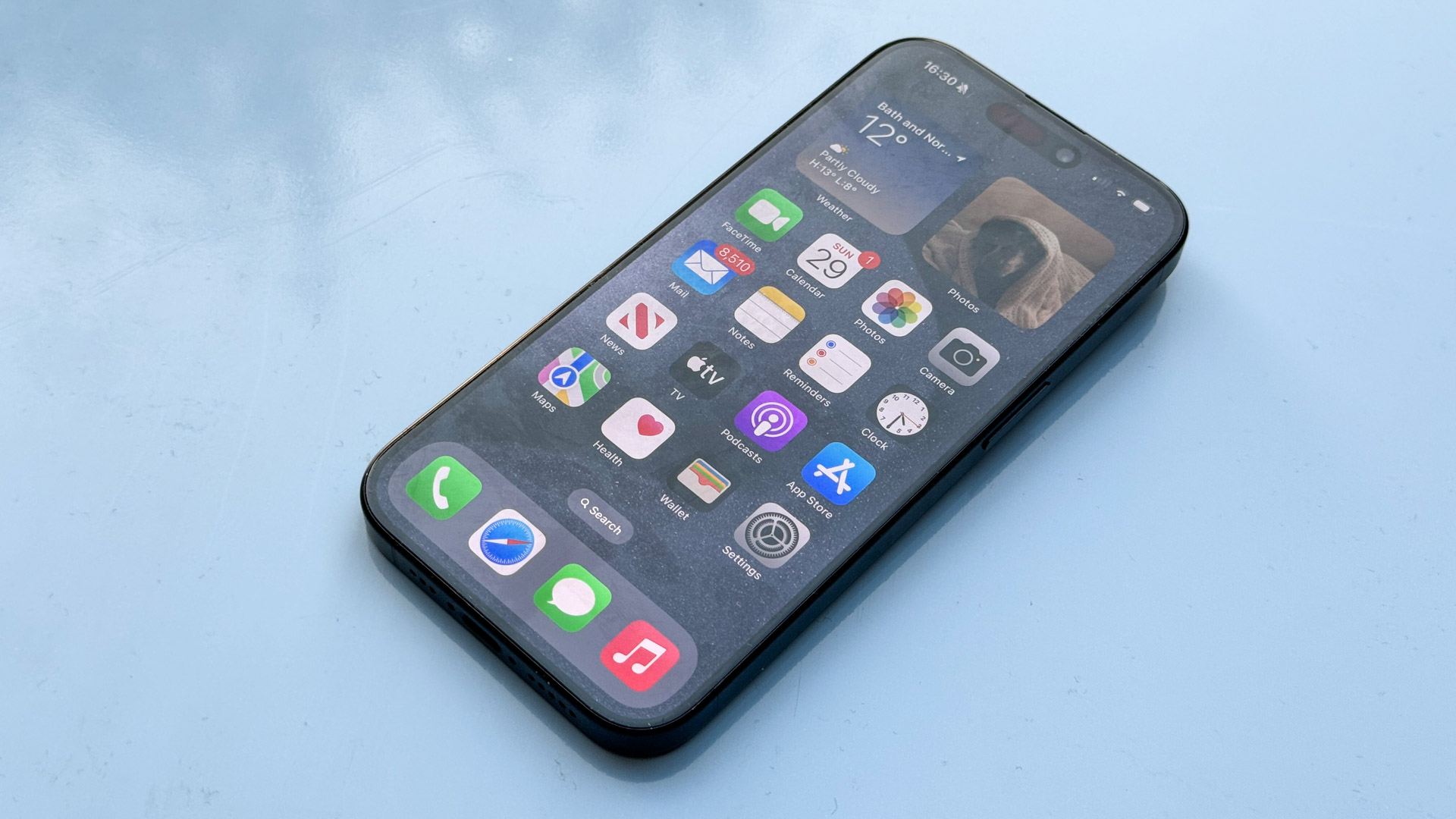
6.1-inch Super Retina display
As I mentioned before, there’s no change in the size of the display on the iPhone 15 Pro. In fact, it’s identical in spec to the previous model. The good thing is that this is an exceptional screen. The 6.1-inch Super Retina XDR display has a 2556x1179 pixel resolution and 1600 nits peak brightness – or 2000 nits for outdoors, without the HDR.
ProMotion tech on this device means it has an adaptive refresh rate that can go up to 120Hz for smoother gaming and down to just 1Hz to save battery life on the lock screen. This allows for the always on functionality, letting you see your clock, widgets and notifications without having to continually wake your phone.
With an identical screen also comes the same Dynamic Island cut out in the screen. More app developers are now making use of this as a feature, providing notifications for live events and actions in the Dynamic Island area, especially now it features across all iPhone models.
I have noticed that some (non-Apple) streaming video apps are extending their video displays over the area for ultra-wide shows, leaving a cut out in the image. Hopefully this will be resolved in future updates. I do like the way the Dynamic Island works though, and some of the uses – such as Uber and United Airlines – not only look great but are actually really helpful.

A serious camera upgrade
There are some significant changes to the camera system in the iPhone 15 Pro. The main 48MP camera now defaults to 24MP rather than 12MP for all captures and offers a choice of 24mm, 28mm or 35mm equivalent focal length crops. It also allows for a 12MP 2x zoom from the same lens. This along with the macro mode, the ultra-wide and telephoto cameras means that you get a choice of seven distinct focal lengths from the rear camera array.
The camera app lets you continuously zoom through the full range using the on-screen zoom wheel, seamlessly changing between the three lenses. This is really great for video and helps you produce professional-looking clips.
Unlike the 15 Pro Max, this model does have the new 5x telephoto camera. Instead, the longer zoom is the same 3x zoom that the 14 Pro models offered. That means a maximum 77mm equivalent rather than 120mm in 35mm equivalents. The digital zoom will let you go further – up to 15x – but that’s also less than the 25x digital zoom that the 15 Pro Max gives you.
This isn’t the first time Apple has offered different zoom lengths on the Pro and Pro Max models. The iPhone 12 Pro Max offered a 2.5x zoom while the 12 Pro offered 2x. However, more recent phones have kept the cameras identical. While the longer zoom could be a reason to pick the Max model this year, I don’t think the 3x is a huge disadvantage for most users.


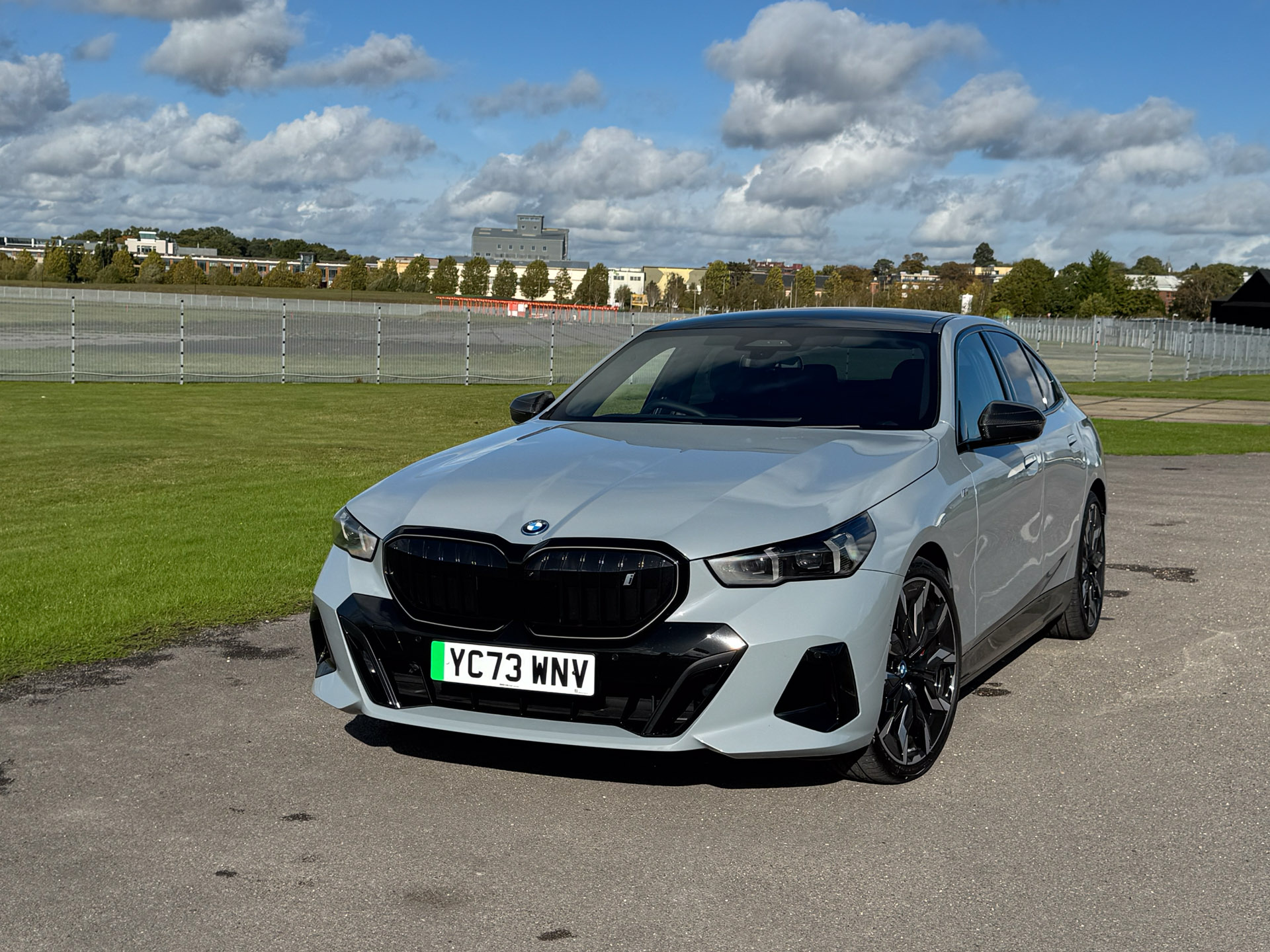
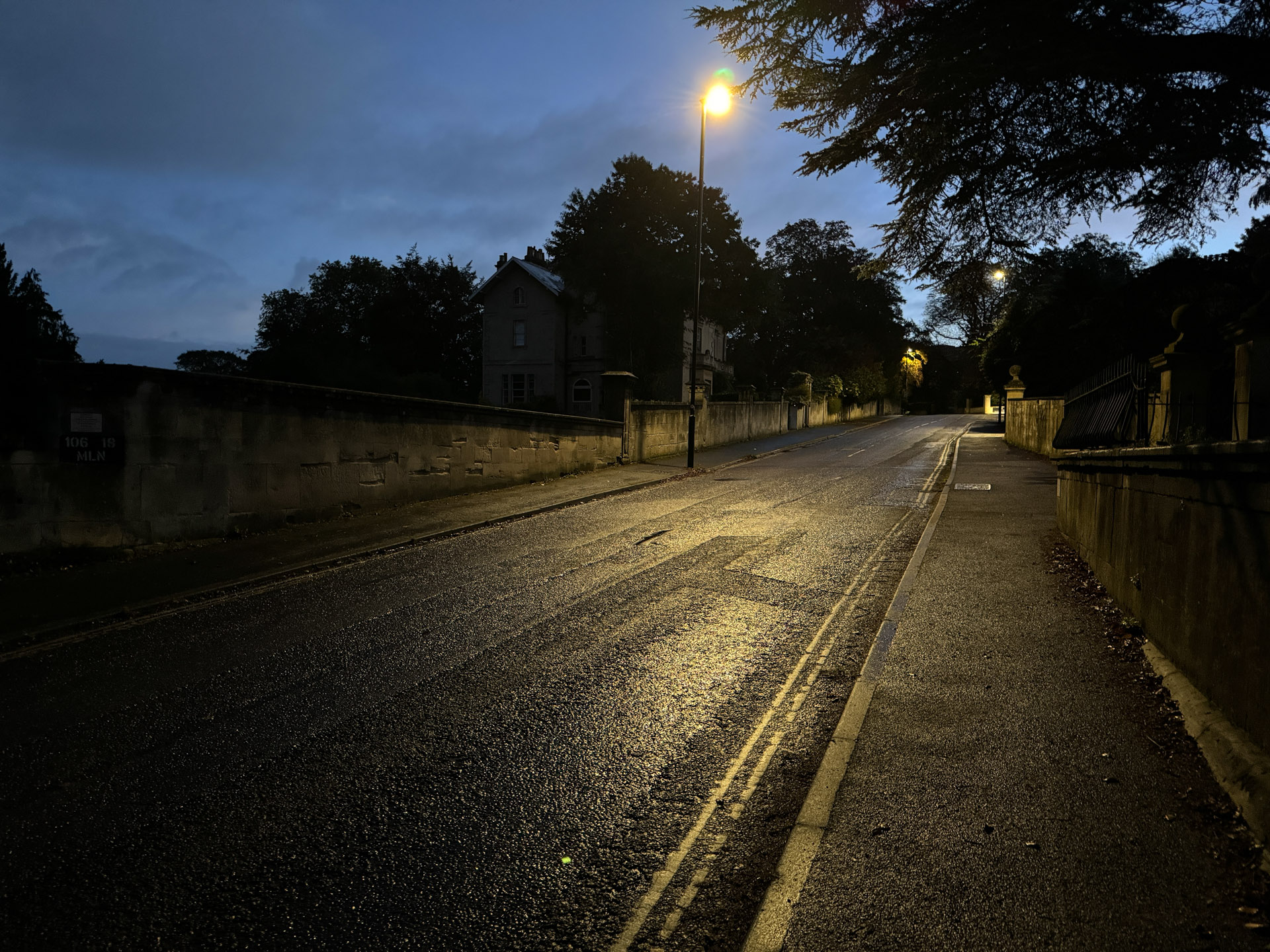
Arguably the 3x (70mm) is a better length for portraits. The 5x is often too close on the Pro Max and I found myself zoom out again. However, for taking pictures at gigs and sporting events, there is an advantage.
When it comes to image quality, the iPhone 15 Pro is a match for the Pro Max and difficult to beat. The 24MP images contain more detail and the control of highlights and shadows – using the Photonic Engine is really impressive.
When viewed at 100% or more on a computer, you can see the extent that the phone is applying noise reduction to the images. Details can look quite painterly where it was attempted to smooth the images, but this is to be expected on any relatively small censored camera, and is only really noticeable on the 12MP cameras, not the main 48MP camera.
The new portrait function automatically detects when there’s people or animals in the shot and saves a depth map in the general photo mode. This means you can make edits to the focus point and background blur, afterwards. Personally, I’d love to see this depth map added to every shot, as it’s not only my portraits that I like to get creative with, but perhaps that will follow soon.

Performance and battery
The A17 Pro chip inside the iPhone 15 Pro is quite remarkable in terms of its power. It combines a 6-core CPU, a 6-core GPU and a 16-core Neural Engine. In terms of speed, the CPU is 10% faster while the GPU is 20% faster than the A16 Bionic chip. For reference, its multi-core Geekbench score of 7213 (I actually recorded 7509) is faster than any Intel-based MacBook Pro models (to late 2019).
Where the iPhone 15 Pro’s chip really excels is in its gaming abilities. Thanks to the MetalFX upscaling it can deliver high quality graphics and console-worthy performance. If you’re really into gaming it’s worth buying an add-on controller, such as the Backbone controllers, as the screen on the iPhone 15 Pro can start to feel a bit busy with your thumbs using on-screen controllers.
Being a smaller device, the battery life is a little less than the Pro Max model, with up to 23 hours of video playback and 75 hours of audio playback. That’s the same figures that were quoted for the iPhone 14 Pro, which considering it has a considerably more powerful chip, is good going.
I certainly found that the iPhone 15 Pro had no problem lasting a full day and most of the time still had around 50% charge left when I went to bed. With heavy gaming use the battery will drain much faster, but that’s to be expected from any phone.

Should I buy the iPhone 15 Pro?
With two Pro models in the iPhone 15 range, whether you go for the iPhone 15 Pro or the Pro Max will come down to a couple of factors. If you want a bigger screen or a longer camera lens the Max will sway you. However, for those that want great performance in a phone that fits easily into your pocket and in your hand, the Pro could be the better choice.
There's a good reason why the Pro has proved more popular than the regular iPhone in the past and it’s likely to be the same this year. Having the three rear cameras, the always-on display and such a powerful chip are huge selling points of this phone.
If you’re upgrading from a 12 Pro or a 13 Pro model, you’ll see a significant improvement in both the cameras and the performance – especially the always-on display and Dynamic Island.
I would recommend the iPhone 15 Pro for photography enthusiasts, too, as that 3x zoom is perfect for portraits. It might be that the 15 Pro Max is the ultimate iPhone, but the 15 Pro is still a top option for most users.
Also consider
If you’re undecided as to which of the iPhone 15 models are right for you, it’s likely to come down to a few major factors. If you don’t need the advanced camera, an always on display and aren’t much of a gamer, the standard iPhone 15 model is still an excellent choice. Especially if you are upgrading from a phone more than a couple of years old.
If you must have the very best – and who doesn’t want the best, really? It’s the iPhone 15 Pro Max that’s likely to get your dollars. Giving the Max the better camera options is likely to push more people to the top model this year and if you’re into gaming, or just watching movies on your phone, that larger screen has its advantages.

As T3's Editor-in-Chief, Mat Gallagher has his finger on the pulse for the latest advances in technology. He has written about technology since 2003 and after stints in Beijing, Hong Kong and Chicago is now based in the UK. He’s a true lover of gadgets, but especially anything that involves cameras, Apple, electric cars, musical instruments or travel.
- Mike LoweTech Editor
